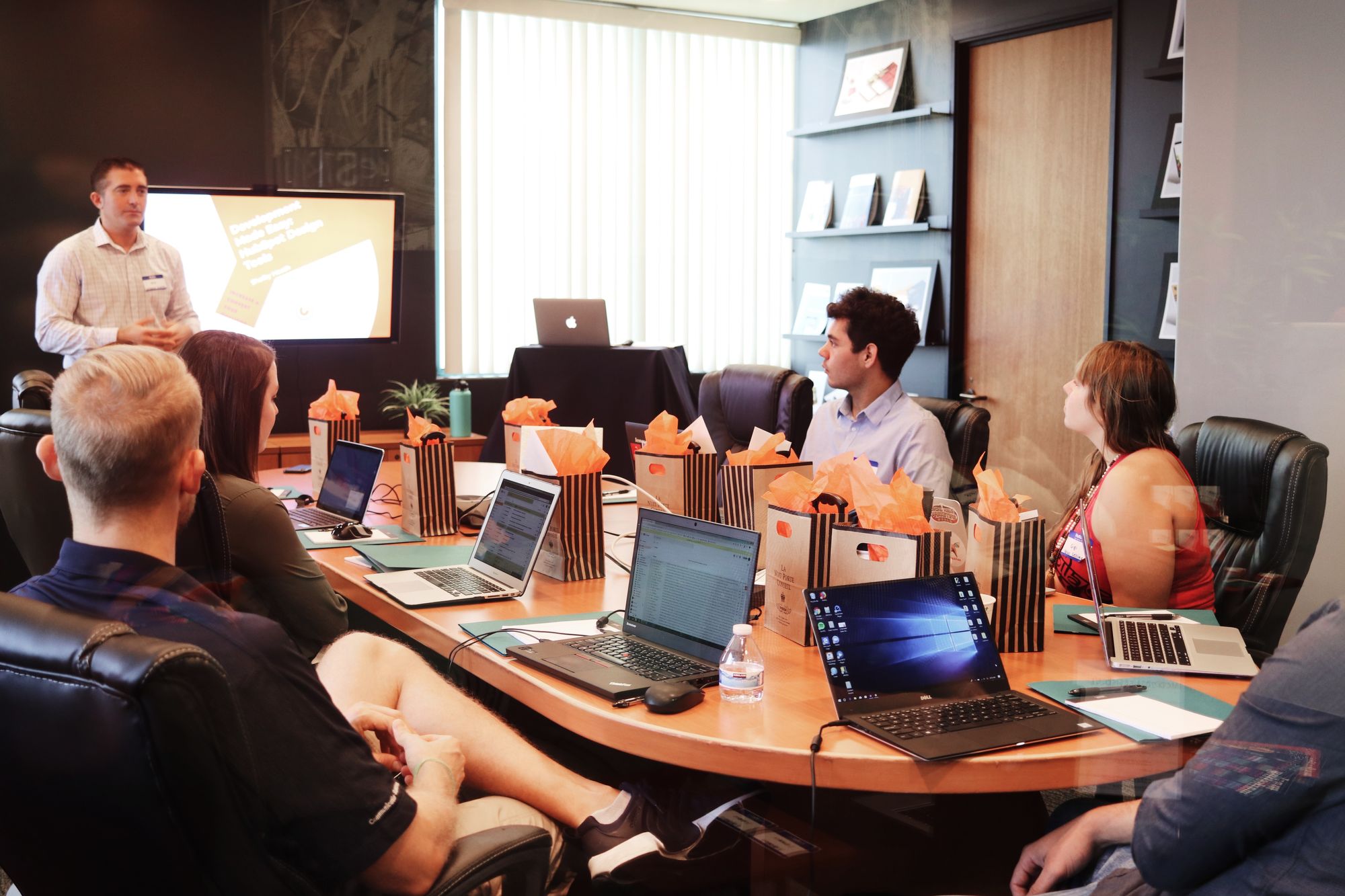According to Forbes, “Innovation is a Top Priority for Most Companies, But Many Struggle to Execute,” 80% of businesses believe that innovation is a top priority for their organization. In fact, 60% of businesses expect their innovation efforts to increase in the next three years.
However, while 96% of businesses believe that continuous innovation is important for success, only 4% have a formal process in place for the same.

Further on, a study by PwC, "Global Innovation 1000 Study,” it was found that Nearly 70% of companies are investing in innovation through internal R&D, partnerships, or acquisitions.
Lastly, a study by Deloitte, “Global Technology Trends,” found that 85% of companies are investing in artificial intelligence, the Internet of Things, and other digital technologies to drive innovation.
All of these statistics are proof of how businesses place importance on continuous innovation for the success of their businesses, increased revenue, achieving sustainable supply chains, assured competitiveness, and even for increasing customer loyalty, as well as satisfying the expectations of their buyer personas.
ERP.AI supports continuous innovation by leveraging AI to uncover process inefficiencies, suggest data-driven improvements, and accelerate decision-making—helping companies execute innovation strategies with clarity and consistency.
What is Continuous Innovation?
Continuous innovation is a systematic and ongoing process of introducing new ideas, products, services, and business models that create value for customers and improve organizational performance.
It involves continually evaluating and improving existing products, services, and processes, as well as exploring new opportunities to drive growth and competitiveness.
The goal of continuous innovation is to keep organizations ahead of the curve by responding quickly to market changes, customer needs, and emerging technologies.
This approach is characterized by a culture of experimentation, risk-taking, and learning and requires organizations to be agile and adaptable in order to drive long-term success.
By adopting policies that foster continuous innovation, organizations will be able to improve their cash flow, improve customer retention, maximize their net revenues and net profit ratios, and be able to stay competitive, as well as ahead of the changing trends.
What are the 7 Different Types of Innovation?
Each type of innovation has the potential to drive growth and competitiveness, and organizations may use a combination of these approaches to achieve their innovation goals.
The key is to identify the type of innovation that is most appropriate for each situation and to have a process in place for continually evaluating and improving existing offerings and exploring new opportunities.
The seven types of innovation that organizations can consider are:
Product Innovation
This involves the development of new or improved products that meet the needs of customers. It can range from small tweaks to existing products to completely new offerings. Successful product innovations can lead to increased sales referrals, as well as higher returns on investment.
Process Innovation
This involves improving the way a product is made or delivered to customers, with the goal of reducing costs, improving efficiency, and increasing customer satisfaction.
Process innovation can also lead to decreased cost of goods sold and cost of goods manufactured. Additionally, it can also help organizations in keeping their business expenses in check and, thus, save their working capital from undue pressure.
Business Model Innovation
This involves creating new revenue streams or finding new ways of conducting business. This can involve changes to pricing, distribution, or the way goods and services are delivered to customers. This innovation can encourage returning customers, as well as increase the ratio of operating income to operating expenses.
Service Innovation
This involves the creation of new or improved services that meet customer needs in new or different ways. Service innovation can thus lead to repeat business, as well as positive brand awareness.
Strategic Innovation
This involves creating new strategies or business models that change the way a company operates, with the goal of improving competitiveness and creating new value.
Strategic innovations are useful in the formation of business plans, marketing plans, and sales strategies, as well as after-sales service and any other operations that the company engages in.
Social Innovation
This involves creating new solutions to social or environmental problems, such as poverty, climate change, or healthcare. Social innovation tends to support sustainability and thus helps businesses in satisfying their sustainability goals.
Technological Innovation
This involves using new or improved technology to create new products, services, or processes. This can include the development of new materials, software, or hardware.
This innovation will largely help in improving the operational metrics and business metrics of an organization. In fact, it often leads to improving the financial KPIs and financial statements of an organization too.
What are the 8 Essentials of Innovation?
The eight essentials of innovation which on adopting you would be able to create an innovation-friendly culture and generate new ideas that drive growth and success are:
Purposeful Leadership
A leader who inspires supports, and guides the innovation process by creating a culture of innovation, setting clear goals, and providing resources.
Customer Focus
A deep understanding of customer needs, behaviors, and motivations, which is the foundation of successful innovation.
Collaboration
Working together with partners, employees, and other stakeholders to co-create solutions that meet customer needs and generate value.
Agility
The ability to quickly and effectively respond to change and pivot when necessary, which is essential in an innovation context.
Experimentation
The willingness to test new ideas and learn from failures, which helps build knowledge and refine strategies.
Diversity and Inclusion
A diverse team with a range of perspectives, experiences, and backgrounds that can bring new ideas and approaches and help overcome biases.
Openness to Change
A willingness to embrace new ideas, methods, and ways of working, even if they challenge the status quo.
Systems Thinking
A holistic and interdisciplinary approach to problem-solving that considers the impact of innovation on all parts of a system, including stakeholders, processes, and the environment.
What are the 6 Steps to Get Started on the Path to Continuous Innovation?
The six key steps that you must follow to be able to establish a strong foundation for continuous innovation and stay ahead of the curve in an ever-changing business landscape are:
Define Your Innovation Strategy
In this step of continuous innovation, you have to start by clarifying what you want to achieve through innovation and how it aligns with your overall business strategy.
This includes defining your target markets, identifying areas for improvement and opportunities for growth, and determining the resources you will need to make it happen.
Foster a Culture of Innovation
Encourage an environment that supports creativity and risk-taking. This can include promoting open communication, recognizing and rewarding innovative thinking, and providing opportunities for employees to experiment and try new ideas. This will not only help in better managing workplace stress but also help in retaining top talents.
Encourage Experimentation and Learning
Embrace a "fail fast, learn fast" approach to innovation. This means being willing to take risks, iterate quickly, and learn from failures in order to improve and move forward.
In the long run, all the lessons learned from experimentation will lead to higher account receivables as compared to accounts payable and even lead to healthier balance sheets.
Leverage Technology
Utilize technology and data to drive innovation. This can include implementing tools and systems that support collaboration, streamline processes, and help you gather and analyze customer data.
Implementing business intelligence systems like Deskera will help ensure that you stay rooted on your path to continuous innovation while also enabling you to monitor your performance through relevant KPIs and analytics.
Collaborate with Others
Partner with customers, suppliers, and other stakeholders to generate new ideas and perspectives. This can also involve collaboration with other organizations, universities, or research institutions.
All the inputs from these collaborations will help in building a better master production schedule, as well as undertake more efficient production planning and scheduling.
Continuously Measure and Adjust
Regularly assess your progress towards your innovation goals and adjust your strategy as needed. This includes gathering feedback from customers and employees, monitoring industry trends and market developments, and conducting regular performance reviews.
What are the Advantages of Continuous Innovation?
Continuous innovation refers to a consistent and ongoing process of creating and implementing new ideas and improving existing products, services, or processes.
Overall, continuous innovation can bring significant benefits to organizations, helping them remain competitive, improve customer satisfaction, and drive growth and success.
Thus, the advantages of continuous innovation include the following:
Increased Competitiveness
By continuously improving and adapting to changing market conditions and customer needs, organizations can maintain a competitive advantage and stay ahead of the curve. This will lead to higher gross profits for organizations like yours.
Improved Customer Satisfaction
Continuous innovation can lead to the development of new and improved products and services that better meet customer needs, leading to increased customer satisfaction and loyalty.
Increased Efficiency and Productivity
Continuously improving processes and systems can lead to increased efficiency and productivity, reducing operating costs and expenses and increasing profitability.
Attraction and Retention of Talent
A culture of innovation can attract and retain top talent who are motivated to work for organizations that embrace change and embrace new ideas.
Increased Market Share
By continuously improving products and services and creating new offerings, organizations can increase their market share and reach new customers.
Improved Brand Image
Being known for innovation can improve an organization's brand image, creating a positive perception of the organization and increasing brand loyalty.
New Revenue Streams
Continuously innovating can lead to the creation of new products and services, which can result in new revenue streams and growth opportunities.
Staying Ahead of Market Trends
By continuously monitoring market trends and anticipating customer needs, organizations can stay ahead of the curve and be well-positioned to take advantage of new opportunities.
What are the Disadvantages of Continuous Innovation?
Continuous innovation can also have some disadvantages, including:
High Costs
The process of continuous innovation can be expensive, with costs associated with research, development, and implementation of new ideas and products.
Risk of Failure
Continuous innovation involves taking risks, and not all ideas will be successful. This can result in wasted resources and disappointment. This can even take a toll on your resource capacity planning, and you might even need safety stock accordingly.
Difficulty in Balancing Short and Long-Term Goals
The focus on continuous innovation can lead to a short-term focus that can detract from longer-term strategic goals and investments. This can affect your marketing KPIs, income statement, as well as your sales, customer retention, and brand positioning statement.
Overburdening Employees
The pressure to continuously innovate can lead to overburdening employees, leading to burnout and reducing the overall effectiveness of the innovation process.
Resistance to Change
There may be resistance to change and new ideas, both within the organization and among stakeholders, leading to challenges in implementing new innovations.
Difficulty in Measuring Success
The impact of continuous innovation can be difficult to measure, making it challenging to determine the return on investment and justify continued investment.
Potential Loss of Focus
The focus on continuous innovation can lead to a loss of focus on core business activities and lead to neglect of important day-to-day operations.
This can thus lead to failure in accurately following shop floor schedules, or improper supply chain management, warehouse management, and inventory management. This thus carries with it the risk of dissatisfied customers and loss of sales.
Legal and Ethical Considerations
Innovation can raise legal and ethical considerations, such as intellectual property rights and privacy, that must be carefully considered and addressed.
Difference between Continuous Innovation and Discontinuous Innovation
Continuous innovation and discontinuous innovation are two different types of innovation that have distinct characteristics and impacts on organizations.
Continuous innovation refers to the incremental improvement of existing products, services, or processes over time. It involves small, iterative changes that aim to enhance performance and functionality but do not fundamentally change the underlying product or service.
An example of continuous innovation is the ongoing improvement of a smartphone, with new models being released each year that feature slightly better specifications and improved design.
Discontinuous innovation, on the other hand, refers to radical or disruptive changes that create new markets, displace existing products or services, and fundamentally change the way things are done. Discontinuous innovations are often game-changing and create new growth opportunities for organizations.
An example of discontinuous innovation is the advent of smartphones, which disrupted the traditional mobile phone market and created entirely new categories of products and services.
In summary, continuous innovation focuses on enhancing existing products, services, and processes, while discontinuous innovation creates entirely new products, services, or markets.
How AI Drives Continuous Improvement Across Businesses
AI uncovers patterns from large datasets, offering insights into customer behavior, operational bottlenecks, or market shifts. This allows companies to make smarter decisions, experiment faster, and optimize workflows with each cycle.
AI also supports agile development by integrating feedback loops and predictive analytics, enabling teams to pivot strategies quickly. As businesses face growing pressure to innovate faster, AI provides a scalable, intelligent system that turns insights into action—fueling long-term innovation, adaptability, and competitive advantage.
Frequently Asked Questions about Continuous Innovation
- What are some of the largest factors that a firm must consider when it demands continuous product innovation?
When a company considers continuous product innovation, there are several factors that it must keep in mind. These are:
- The management needs to be on board and committed to the process of continuous innovation. This will ensure that all the required support, like time and budget, is available to those involved in the innovation process when required.
- A culture that supports innovation must be built. This means that when the employees step forward with unique suggestions and new ideas, they should be applauded and not shot down. This is because innovation must be communicated, and those who encourage innovation should be rewarded. Lastly, resources and space should be allowed for innovation.
- All employees should be involved in the innovation process as one never knows who would come up with the next big idea.
- Why is continuous innovation important?
Continuous innovation is important because it helps organizations stay relevant, stay ahead of the competition, improve customer satisfaction, and increase profitability.
- Can a business survive long-term with only continuous innovation?
While continuous innovation is integral for the success of a company, it is not the only important factor, as other processes and solutions need to be put in place as well for the success of a company.
- Is continuous innovation better than continuous improvement?
No. It has not been proven that continuous innovation is better than continuous improvement, as both are necessary for the success of a company. This means that neither one is greater than the other.
- How can you promote continuous innovation within your organization?
Just like any other process, companies can promote continuous innovation within their organization. Some of the ways in which it can be promoted are incentives, training courses, constant communication, and competition.
- Is continuous innovation too risky?
Almost every business activity can be described as risky. Without it, it would not be a business. Continuous innovation is not riskier than client onboarding, product development, or process improvement.
- What is the impact of continuous innovation on customers?
Continuous innovation leads to the development of new and improved products and services that better meet customer needs, leading to increased customer satisfaction and loyalty.
- How does continuous innovation impact an organization's bottom line?
Continuous innovation can improve efficiency, reduce costs, and increase profitability, positively impacting an organization's bottom line. However, the high costs associated with the innovation process must also be considered.
How can Deskera Help You with Continuous Innovation?
Deskera is a cloud-based software solutions provider that offers a range of products and services to support various business functions such as project management, human resources, accounting, and customer relationship management.
Deskera can support continuous innovation by providing the following benefits:
- Collaboration tools - Deskera's collaboration tools can help organizations foster a culture of innovation by facilitating teamwork and communication among employees.
- Data management - Deskera's data management tools enable organizations to gather, store, and analyze data to inform their innovation initiatives.
- Process automation - Deskera's process automation tools can streamline business processes, freeing up time and resources for innovation activities.
- Project management - Deskera's project management tools can help organizations plan, track, and execute their innovation initiatives, from ideation to implementation.
- Reporting and analytics - Deskera's reporting and analytics tools can provide organizations with insights into the performance of their innovation initiatives, helping them make data-driven decisions.
Thus, with Deskera Books, Deskera CRM, Deskera People, Deskera ERP, and Deskera MRP, you would get the comprehensive support that your organization needs.
Key Takeaways
Continuous innovation is a systematic and ongoing process of introducing new ideas, products, services, and business models that create value for customers and improve organizational performance.
The seven different types of innovations are:
- Product innovation
- Process innovation
- Business model innovation
- Service innovation
- Strategic innovation
- Social innovation
- Technological innovation
The eight essentials of innovation are:
- Purposeful leadership
- Customer focus
- Collaboration
- Agility
- Experimentation
- Diversity and inclusion
- Openness to change
- Systems thinking
The six steps to get started on the path to continuous innovation are:
- Define Your Innovation Strategy
- Foster a Culture of Innovation
- Encourage Experimentation and Learning
- Leverage Technology
- Collaborate with Others
- Continuously Measure and Adjust
The advantages of continuous innovation are:
- Increased Competitiveness
- Improved Customer Satisfaction
- Increased Efficiency and Productivity
- Attraction and Retention of Talent
- Increased Market Share
- Improved Brand Image
- New Revenue Streams
- Staying Ahead of Market Trends
The disadvantages of continuous innovation are:
- High Costs
- Risk of Failure
- Difficulty in Balancing Short and Long-Term Goals
- Overburdening Employees
- Resistance to Change
- Difficulty in Measuring Success
- Potential Loss of Focus
- Legal and Ethical Considerations
Deskera will be able to help organizations support continuous innovation by providing them with the tools, data, and insights they need to drive their innovation initiatives.
Related Articles













